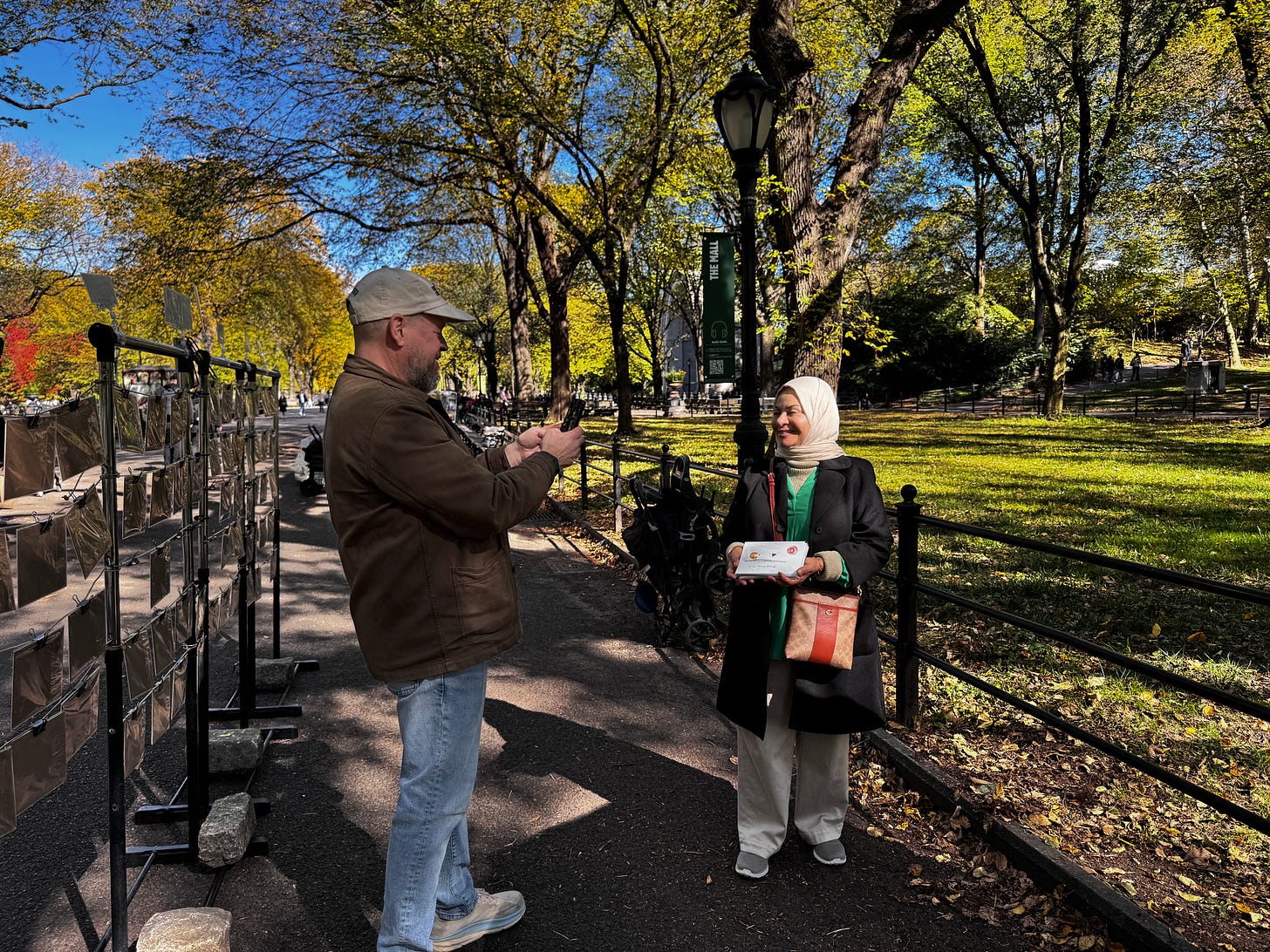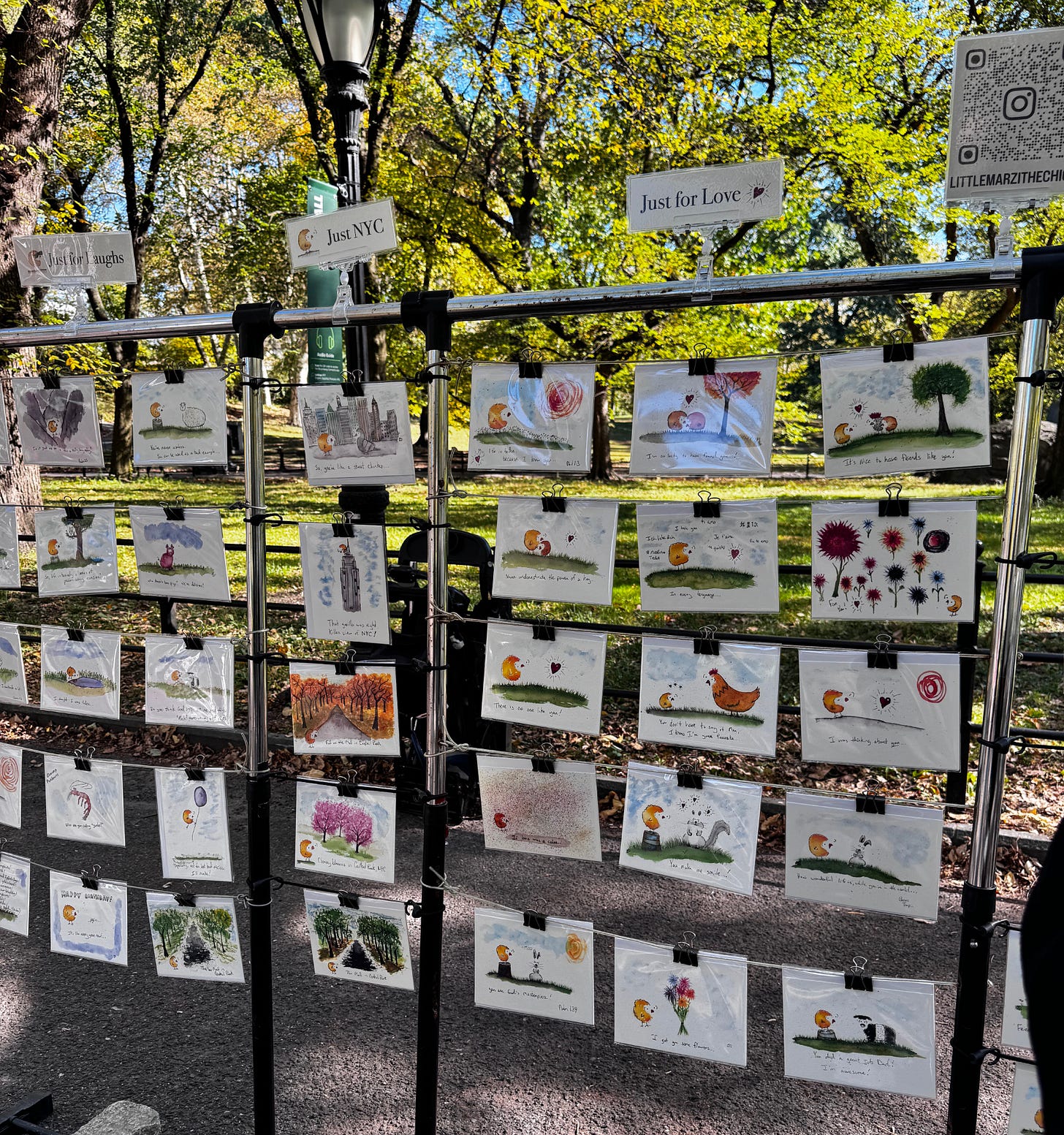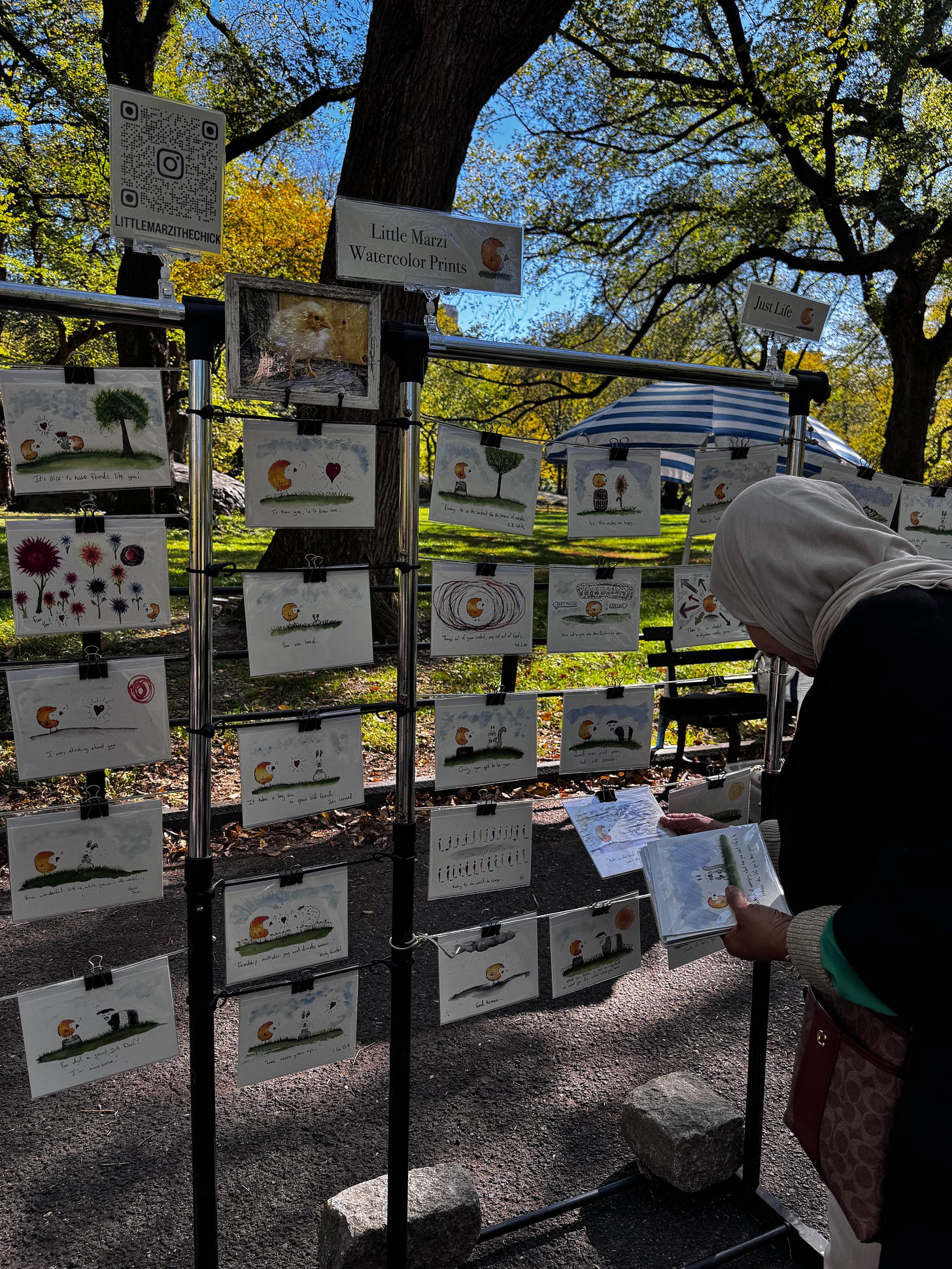Why We Paid $20 for a Chicken Card
A Central Park artist, a pet chicken named Marzipan, and a lesson in how storytelling shapes what we’re willing to pay.
Today’s post is slightly different; it is a personal story.
I traveled to New York City last week for a short trip to visit my mom and brother, who were in town from Oman. During our visit, my mom and I took a walk through Central Park to enjoy the fall colors and stopped by an artist’s booth.
His name was Alex, an actor who, during the pandemic, discovered a hidden talent for watercolor and drawing. When theaters shut down, he was forced to pivot. He began painting cards inspired by his pet chicken, Marzipan.
Each card was charming, and Alex was clearly talented. But what really caught my attention was his pricing structure. When I asked how much the cards cost, he smiled and said, “Pay what you want.”
After hearing Alex talk about Marzipan, his creative process, and how art helped him rebuild after the pandemic, we didn’t hesitate. We paid $20 per card, and I would do it again.
The Economics
If you’ve been reading Decode Econ lately, you’ve probably noticed a pattern. From libraries that build community to students building confidence through transferable skills, we keep coming back to one idea: value is built through connection.
Alex’s story captures this perfectly.
Traditional economics says buyers make choices based on prices, income, and utility. And behavioral economics tells us that emotions, meaning, and trust shape our decisions just as much.
What stood out about Alex was that he didn’t try to sell me anything. He didn’t ask if I wanted to buy a card; he told me the story behind each piece. The story behind his passion. How he overcame the challenges of a disrupted economy by discovering a new skill he never knew he had.
That emotional connection changed how I valued his art.
Behavioral economists call this affective valuation. It is the way emotions and meaning shape our perception of worth. By sharing his story, Alex made the cards feel personal and purposeful, not just material.
By sharing his story, Alex changed the economics of his art. The watercolor wasn’t just a greeting card anymore; it became a conversation and a personal connection.
Through that emotional exchange, he increased my willingness to pay. Suddenly, $20 didn’t feel like a purchase; it felt like participation in his journey.
But there’s another layer here.
By letting me set my own price, Alex was also practicing what economists call first-degree price discrimination, also known as perfect price discrimination. It’s a strategy where a seller charges each customer the maximum price they’re willing to pay.
In most markets, firms must rely on data and algorithms to estimate that willingness to pay. Alex didn’t need any of that. Through storytelling, he created trust and connection, and I willingly revealed exactly what his art was worth to me.
Of course, there’s always a chance someone might underpay. That’s the risk of relying on honesty and connection instead of fixed prices. But that’s also what makes Alex’s model so interesting; it turns a simple transaction into a moment of shared trust between artist and buyer.
Last week, I purchased more than paint on paper; I walked away feeling like I had invested in purpose, resilience, and creativity.
The Bottom Line
Whether you’re a student learning to communicate your skills, a professor trying to make data meaningful, or a small-business owner telling your brand’s story, the economics are the same: connection creates value.
That’s why I keep saying higher education needs to tell its story better. It’s why I encourage people to learn how to tell their story. And it’s why I built this platform: when we connect and you understand my story, you’re more likely to value what I do.
You’ll see my passion for economic literacy, and when you think about economics, I hope you think of me.
Thank you for recognizing the value of my work and for taking the time to read it. Please do me a favor, next time you’re in Central Park, stop by and see Alex. Buy a card.
If this story made you smile or reminded you of a time you happily paid more to support passion, share this issue with a friend. That is how you can support Decode Econ!
Every card, every idea, and every connection has a story worth telling. What’s your story?
Instagram
Follow LittleMarziTheChick on Instagram







First Degree Empathy Discrimination! Or maybe even "Ethical Discrimination" We all know people who would take advantage of that pricing - but maybe she recognized you as someone who would respond ethically/empathically. If so, she has a talent for selling! (very sweet card)
This newsletter demonstrates the exact storytelling you highlighted. I love this story.